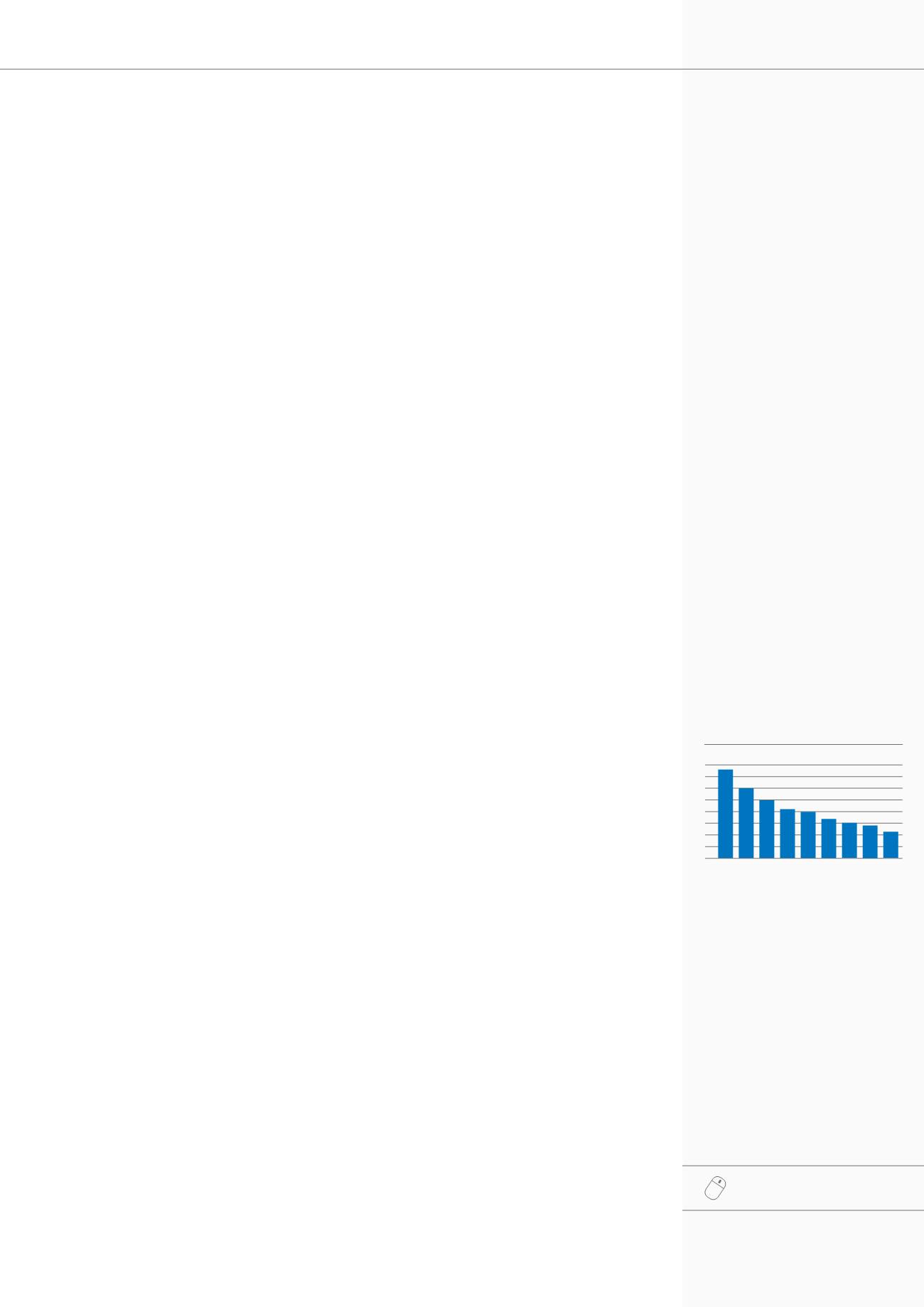

KONE 2015 | SUSTAINABILITY REPORT
SAFETY
17
in different parts of the world and provide
educational material for our customers and the
general public to help equipment users stay
safe. Our safety mascots, Bob and Max, help
teach children about the safe use of equipment
through events, leaflets, and an online
animation and game.
Building owners and maintenance service
providers are responsible for making sure
equipment is professionally maintained and
kept in good condition. Building owners
should, for example, inform service providers
if they identify any recognizable hazards,
such as broken glass or sharp edges due
to vandalism. We work closely with our
customers to provide them with the tools to
recognize and deal with situations that could
lead to safety risks.
Active participant
The safety level of elevators, escalators,
and automatic building doors is largely
determined by national and international
safety codes and standards. KONE
contributes actively to the development
of codes and standards that aim to further
improve equipment safety. We also promote
safety through our involvement in industry
trade associations. Our experts have, for
example, been involved in the planning
and development of the extensively revised
main European safety standards for elevators
(EN 81-20 and EN 81-50) introduced in
2014, and the new European Lifts Directive
2014/33/EU, enforced from April 20, 2016.
A major concern for our industry is the aging
urban infrastructure systems in cities around
the world. In Europe, several countries have
adopted strict standards for improving safety
through modernization. Elevator modernization
is a critical issue that enhances safety and
accessibility by, for example, improving leveling
accuracy and the functioning of doors, and
providing a voice link to the service center. We
work with customers to find the modernization
solutions that best meet the requirements of
their buildings.
As a technology provider, KONE manufactures
equipment that meets applicable codes and
standards. Furthermore, our equipment often
includes additional safety features that exceed
the minimum requirements.
Safe at work
At KONE we have defined safety as our highest
priority. This means making sure each of our
employees has the necessary competence to
perform their work professionally and safely.
KONE’s Supplier Code of Conduct requires
all of our suppliers, including subcontractors,
to protect the health and safety of their
employees. We require both our employees
and subcontractors to follow our globally
defined rules and methods to protect their
own safety and that of anyone else who may
be affected by their activities.
KONE employees receive training on health
and safety, and safety is a key element in all of
our product and operations trainings. Toolbox
talks are used to communicate safety messages
to field employees. And for four years running,
KONE has organized a Global Safety Week with
a range of activities aimed to further boost our
safety culture.
Every manager is responsible to provide his
or her team with all the necessary means for
working safely. Managers perform regular
audits to measure compliance with KONE’s
policies, rules, and defined working methods.
Corrective actions are taken if deviations are
identified.
KONE also conducts process audits and
controls to identify possible obstacles to work
safety and if found, the work in question is
stopped until a safe method is approved.
Members of senior management teams
participate in workplace audits regularly.
Incidents, lost days per incident, and the
number of near misses are part of each
unit’s monthly reporting to global functions.
The underlying root causes are identified
and corrective and preventive actions are
implemented to prevent the accident or
near-miss from being repeated. Quarterly
global safety network meetings are used to
share lessons learned from accidents and near
misses, and safety managers gather monthly
to discuss concerns and share best practices.
Read more at
www.KONE.com/safety.IIFR DEVELOPMENT
In 2015 the industrial injury frequency
rate (IIFR) among KONE’s employees
was down by 18% from 2014. As a
key performance indicator, KONE
tracks the number of lost time injuries
of one day or more per million hours
worked.
Industrial Injury Frequency Rate
development among KONE
employees
KONE tracks the number of lost time injuries
of one day or more, per million hours worked,
as a key performance indicator. The IIFR
covers KONE’s own employees.
2007 2008 2009 2010 2011 2012 2013
8
7
6
5
4
3
2
1
0
2014 2015
SAFETY TARgETS
AND ACHIEVEMENTS
• KONE’s ultimate goal is zero
accidents
• In 2015 our industrial injury
frequency rate (IIFR) was 2.3, down
from 2.8 in 2014
• Employees regard KONE as highly
committed to employee safety,
according to the 2015 results of the
annual employee survey Pulse.


















